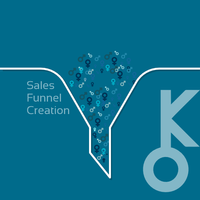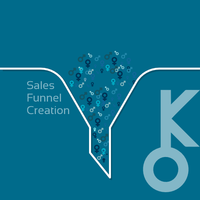Building a Sales Funnel
Building a sales funnel is an essential aspect of any successful business strategy. It helps businesses attract potential customers, nurture their interest, and guide them towards making a purchase. A sales funnel can be defined as a marketing model that represents the customer's journey from being aware of your product or service to becoming a paying customer.
In this comprehensive overview, we will discuss the key components and stages involved in creating an effective sales funnel. By understanding these concepts, you will be equipped with the knowledge necessary to develop and optimize your own successful sales funnels.
Key Components of a Sales Funnel
A sales funnel typically consists of several key components that work together to engage potential customers and convert them into paying customers:
Awareness: In this initial stage, you aim to create awareness about your brand or product through various marketing channels such as social media, content marketing, or advertising.
Interest: Once potential customers become aware of your brand or product, you need to capture their interest by providing valuable content through blog posts, videos, webinars, or lead magnets.
Consideration: At this stage, potential customers are evaluating whether your product or service meets their needs and offers value for money. Providing testimonials, case studies, or free samples can help persuade them.
Decision: As prospects move closer to making a purchase decision at this stage, it becomes crucial to provide additional incentives such as discounts or limited-time offers to encourage immediate action.
Action: This final stage involves converting interested prospects into paying customers by providing easy-to-use checkout processes and secure payment options.
Stages in Building a Sales Funnel
To effectively build and optimize your sales funnel for maximum conversions and revenue generation; there are five primary stages involved:
Define Your Target Audience:
Identifying who would benefit most from your products/services is critical. By understanding your ideal customer profile, you can create targeted messaging that resonates with them.
Create Engaging and Relevant Content:
Developing high-quality content that aligns with the needs and preferences of your target audience is paramount. This could include blog posts, videos, infographics, or podcasts.
Capture Leads:
Implementing lead generation strategies such as offering valuable incentives (e.g., free e-books or newsletters) in exchange for visitor contact details (email addresses) helps build an email list for future marketing efforts.
Nurture Your Leads:
Once leads are captured, it's essential to engage and nurture them through email campaigns, personalized offers, or educational materials. The goal is to build trust and keep your brand top-of-mind as they move through the funnel.
Close the Sale:
In this final stage, you focus on converting leads into customers by utilizing persuasive techniques like limited-time offers, product demos, or testimonials. Providing a seamless purchasing experience helps minimize friction and encourages conversions.
Final Thoughts
Building a sales funnel is an ongoing process of attracting potential customers and guiding them towards making a purchase decision. By understanding the key components involved in each stage of the funnel creation process; defining your target audience accurately; creating engaging content; capturing leads effectively; nurturing those leads towards conversion; and seamlessly closing sales - businesses have a higher chance of achieving success in their marketing efforts.
Remember that continuously analyzing data and optimizing your sales funnel based on real-time feedback will help enhance conversions rates over time. With practice, patience, and strategic planning - you can develop effective sales funnels that generate consistent revenue for your business.
















